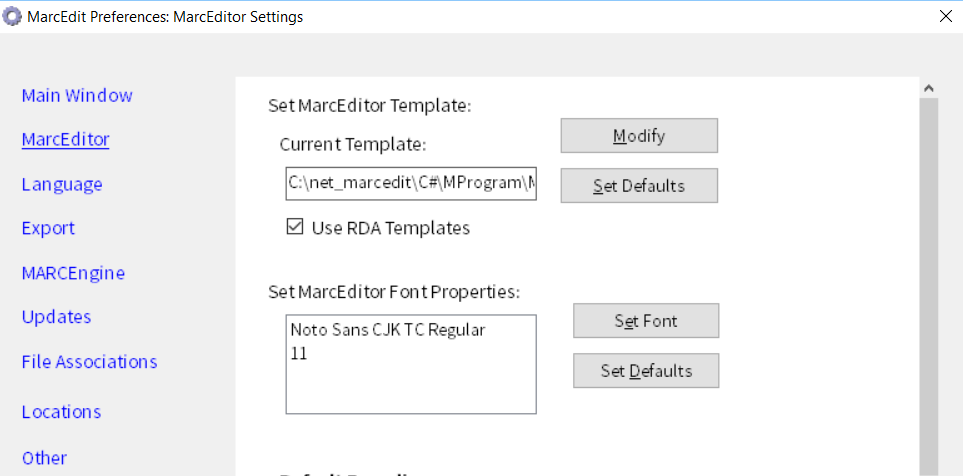In this Chapter:
- Getting started with the preferences
- Fonts and Templates
- Paging Options
- Logging Options
- Autosave Options
Getting Started
When thinking about the MarcEditor, it’s best to think about as a text editor that’s been put on steroids and then tuned to work with MARC data. The editor has been designed to be flexible, to support any character encoding that your operating system can support, and enable users to edit files of any shape and size. The Editor accomplishes this goal by providing different types of loading options, as well as offering users the ability to set your default encodings, fonts, and behaviors related to how MARC data should be treated. In essence, these settings allow MarcEdit to be MARC agnostic, and function as well for a user working with UNIMARC, as a user working with MARC21. It’s this flexibility that makes the tool so powerful, and at times, confusing for new users.
As you may have read earlier in the text, when MarcEdit is first installed, it sets a number of default parameters that configure the application to work with MARC data in specific ways. By default, when MARC format matters, the tool is configured to assume MARC21. Likewise, in the MarcEditor, the tool is configured to assume that the default character encoding is either MARC8 or UTF8, and the certain common behaviors will be desired by the user. As you use MarcEdit and become begin to construct your own workflows for using the application, you may just find yourself coming back to this section and tweaking the way that the MarcEditor works.
Fonts and Templates
Like most document editing programs, MarcEdit utilizes templates when starting the application. Like Microsoft Word, which opens a blank template, so too does MarcEdit open a blank template by default when starting the Editor. In general, this is desired. However, users that want to customize their templates, or add custom information to templates, have that ability. Additionally, MarcEdit includes two sets of templates that correspond to material types when creating new records. These templates are AACR2 or RDA based templates. By default, MarcEdit will select the RDA based templates, but users have the option of selecting either set.
So what does a template look like? Basically, a template is a general MarcEdit mnemonic file that includes a set of fields and data placeholders for users to fill in when creating a new record. For example, selecting the cartographic template, I would get the following template:
=LDR 00000nem 2200000Ia 4500 =001 02905764 =008 YYMMDD?DAT1\\\\CNT\\\\\\\a\\\\\0\\\LNG\d =010 \\$a =040 \\$a $erda $c =007 $a $b $d $e $f $g $h =020 \\$a =034 ?\$a =041 ?\$a =052 \\$a $b =090 \\$a $b =049 \\$a =1xx ?\$a $b $4 =245 ??$a $b $c =246 ??$a =255 \\$a $b $c =26x ??$a $b $c =300 \\$a $b $c =336 \\$a $b $2 =337 \\$a $b $2 =338 \\$a $b $2 =34x \\$a =490 ?\$a $x $v =5xx ?\$a =6xx ??$a =7xx ??$a $e $4 =8xx ??$a $v
